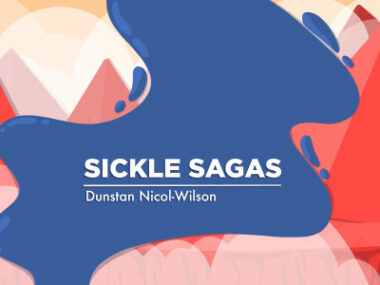Oxbryta Becomes 1st Therapy Approved in EU to Target Cause of SCD
Written by |

Oxbryta (voxelotor) has become the first approved therapy in the European Union to target the underlying cause of sickle cell disease (SCD) for patients 12 and older.
The medication, given as a once-daily oral tablet, suppresses the sickling and destruction of red blood cells that underlies the disease. Eligible patients may take the therapy alone or in combination with hydroxyurea, a standard treatment to reduce the frequency of vaso-occlusive crises — episodes of acute pain caused by sickled red blood cells blocking blood flow — and the need for blood transfusions.
“Living with sickle cell disease is a challenging life-long journey for patients and their families and can negatively impact every aspect of their lives,” Sebastian Stachowiak, head of Europe and Gulf Cooperation Council at Global Blood Therapeutics, which developed the therapy, said in a press release.
“Our goal is to transform the treatment of sickle cell disease, and we are immensely proud to have developed an innovative medicine that we believe has the potential to change the trajectory of the disease,” Stachowiak added.
Health authorities in each European Union member state — as well as in Iceland, Norway, and Liechtenstein — now will decide separately whether to add Oxbryta to their respective public health programs, which will allow patients to access treatments at low or no cost.
The European Commission’s approval comes two months after the Committee for Medicinal Products for Human Use, an arm of the European Medicines Agency, recommended the therapy’s approval. A similar application is being reviewed by health authorities in the U.K.
Oxbryta was previously granted accelerated approval in the U.S. for the same indication, which was subsequently extended to include children as young as 4. Full approval is dependent on positive data from the international Phase 3 HOPE-KIDS 2 trial (NCT04218084). The study, which may still be enrolling, is testing the therapy against a placebo in up to 224 children, ages 2–14, with SCD.
The therapy is also available in the United Arab Emirates for patients 12 and older.
SCD is characterized by the abnormal clumping of hemoglobin, the protein responsible for oxygen transport, inside red blood cells. This makes the cells take on a sickle-like shape, and become more rigid and sticky.
The disease also leads to hemolytic anemia, a condition in which red blood cells are destroyed more quickly than they are made, hampering oxygen delivery to body tissues and causing SCD symptoms.
Oxbryta works by increasing hemoglobin’s ability to bind oxygen, thereby preventing its clumping and the resulting sickling and destruction of red blood cells. As such, it is expected to help restore hemoglobin levels, red blood cell function, and oxygen delivery, while lessening the risk of vaso-occlusive crises.
“Hemolytic anemia is the root cause of significant morbidity in people living with sickle cell disease, yet available treatment options are limited,” said Baba Inusa, MD, consultant and professor of pediatric hematology at Guy’s and St. Thomas’ NHS Foundation Trust, in London.
“Treatment with Oxbryta has been shown to break the recurrent cycle of red blood cell sickling leading to their destruction — significantly improving patients’ hemoglobin levels and the blood’s oxygen-carrying capacity,” added Inusa, who is also chair of England’s national hemoglobinopathy panel.
Oxbryta’s latest approval was based on positive data from the Phase 3 HOPE trial (NCT03036813), which evaluated the safety and effectiveness of two doses of the therapy against a placebo in 274 people, 12 and older, with SCD.
Top-line results showed that six months of treatment with Oxbryta was superior to a placebo at reducing red blood cell destruction and anemia, or low hemoglobin levels.
Specifically, the now-approved 1,500 mg dose led to clinically meaningful and statistically significant increases in hemoglobin levels in 51% of patients, compared with 6.5% of those on a placebo.
After nearly 1.5 years of treatment, these rates increased to 88.9% in the group of patients given the approved dose and 25% in the placebo group, highlighting Oxbryta’s sustained superiority and long-term benefits.
Biomarkers of red blood cell destruction also were significantly reduced with this dose relative to a placebo. These benefits were observed regardless of concurrent treatment with hydroxyurea.
The therapy was generally safe and well-tolerated, with similar rates of adverse events and serious side effects between Oxbryta and placebo groups. Most commonly reported adverse events included headache, diarrhea, abdominal pain, nausea, fatigue, rash, and fever.
The oral therapy is also being tested in up to 155 children, ages 9 months to 17 years, with SCD in the Phase 2 HOPE-KIDS 1 trial (NCT02850406). The study is currently recruiting participants in the U.S., the U.K., and Lebanon.
Previous six-month data from the first 45 treated children, ages 4–11, were consistent with the results seen in older SCD patients in HOPE, and supported the expansion of Oxbryta’s U.S. label to include this younger patient population.







